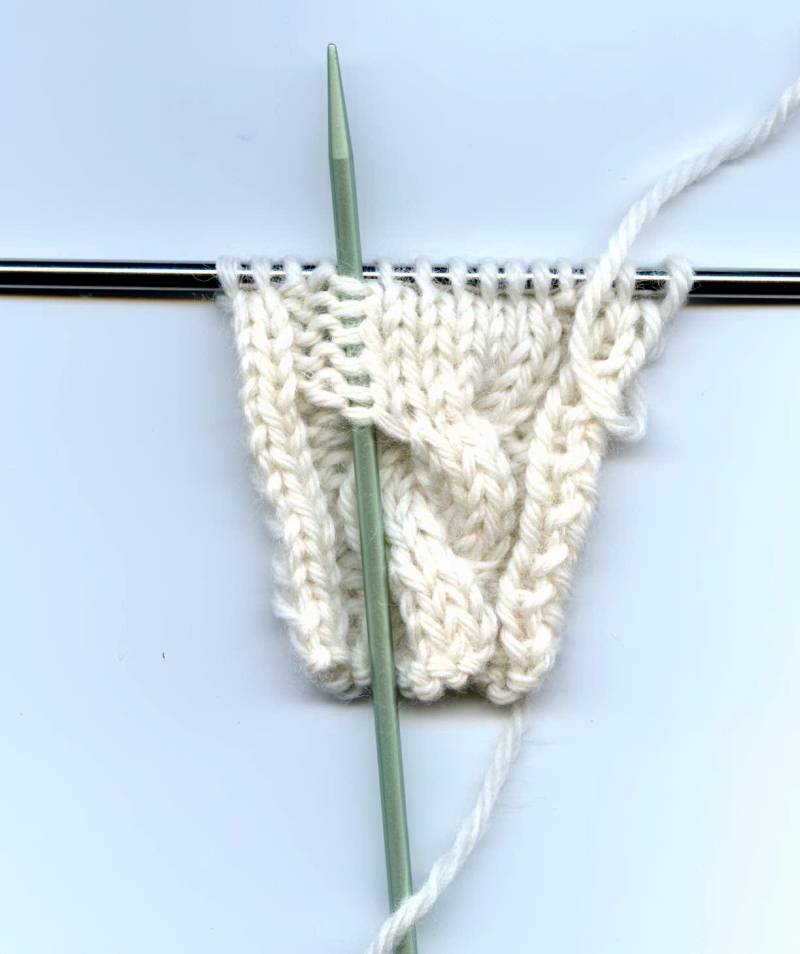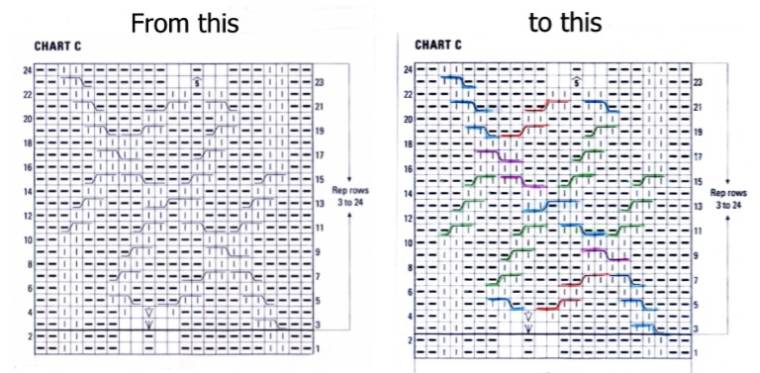- Counting Cable Rows
 Want to avoid cables of different lengths. You can attach a marker to the the cable row
and count the rows. Or you can use a row counter (and hope you do not forget to use it at the end of each row). Want to avoid cables of different lengths. You can attach a marker to the the cable row
and count the rows. Or you can use a row counter (and hope you do not forget to use it at the end of each row).
Here is what I think is a great idea to count rows. An opening is made where the cables cross. Put a needle through that opening to the back and out the front directly under the needle. Now count the ladders. The first one is the cable row. In this example, the cable row is repeated every 6th row. Quicker than moving a marker and more reliable than using a row counter!
—added November 29, 2011 from Lucy Neatby’s Knitting Gems 3
- Cable Flare
Cables pull fabric widthwise and can cause pleats of flare at the top and bottom of the fabric. To prevent this, cross your cables as soon as possible after casting on or near a bind-off edge. Also, you can decrease one or two stitches over the cabled sections as you bind off. The best bind-off is immediately after a row where the cables are crossed.
—added March 21,,\ 2013
- Cable Knit Fix
For many knitters, the left-most knit stitch on cables tends to be oversized. The trick to preventing this involves the purl stitch to the left of the offending knit stitch. On the right side rows, work the offending knit stitch the way you normally would. Then when working the purl stitch immediately to its left, insert your right-hand needle into the stitch purlwise as you normally would, but wrap the yarn around the needle in the opposite direction—clockwise instead of counterclockwise—as you purl the stitch. On the next row, this stitch will present itself to you as a twisted knit stitch. Knit it through the back loop to untwist it.
(from Melissa Leapman’s Cables Untangled)
 Following Cable Charts Following Cable Charts
Cable chart patterns can be difficult to follow. All of the lines and dots can run together and we spend a lot of time searching out the correct symbol from the key. Try color-coding them. Use color pencils and color the lines (or the squares) of each of the different symbols; then color the same symbol on the key. Now your eye will be drawn to the colors.
|

